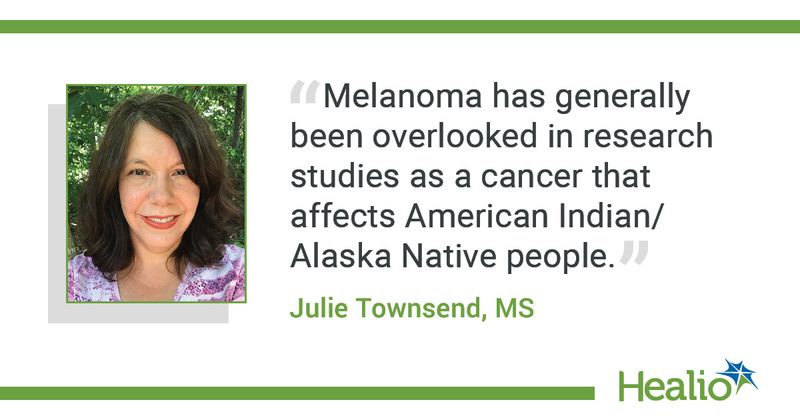Melanoma incidence rates increased in American Indian, Alaskan Native populations
Key takeaways:
- Melanoma incidence in American Indian and Alaska Native populations increased over 20 years.
- Men aged older than 55 years and men and women in the Plains Region had the highest melanoma occurrence rate.
Non-Hispanic American Indian and Alaskan Native populations exhibited increasing rates of melanoma over the span of two decades, especially in certain parts of the country, according to a study.
“Anyone can be diagnosed with melanoma. We are seeing an increase in the rates for some segments of the American Indian and Alaska Native (AI/AN) population,” Julie Townsend, MS, an epidemiologist with the CDC’s Division of Cancer Prevention and Control, told Healio. “Clinicians are often very busy managing other health conditions patients may have, but letting patients know they can report changes to their skin that are worrisome may be a first step. The wide variation in rates across geographic regions may indicate a need for more dermatologic services in medically underserved areas to address the increasing number of people being diagnosed with melanoma.”

Townsend and colleagues used population-based cancer registry data to conduct an observational cross-sectional study, identifying cutaneous melanoma cases in patients aged at least 15 years who were identified as non-Hispanic AI/AN and evaluated incidence rates by age, sex, region, histology, tumor site and stage.
Data from the National Program of Cancer Registries and the Surveillance, Epidemiology and End Results program were used and linked with Indian Health Service registries in order to correct potential misclassifications.
A total of 2,151 patients in this demographic with cutaneous melanoma were identified between 1999 and 2019.
Overall melanoma incidence rates for AI/NA patients were 13 per 100,000 for men and 9.2 per 100,000 for women. Men aged 55 and older had an incidence rate of 34.5 per 100,000, whereas women in the same age range had an incidence rate of 16.6 per 100,000.
Local stage melanoma was the most commonly documented (65%), whereas melanoma not otherwise specified was the most common histologic subtype.
Higher melanoma rates were found in metropolitan Purchased/Referred Care Delivery Areas (PRCDA) compared with more rural or smaller urban PRCDA areas.
Individuals in the Plains Region had the highest incidence rates with 23.8 and 15.5 per 100,000 in men and women, respectively, followed by those living in the Pacific Coast Region with 16.5 per 100,000 for men and 12.3 per 100,000 for women.
Men living in Alaska (5.6 per 100,000) and women living in the southwest (4.4 per 100,000) had the lowest incidence rates.
Between 1999 and 2019, rates increased by an average 2.5% annually in women, by an average 2.5% in regional/distant stage tumors and by 2.8% in people aged 55 years and older.
“The results of our study suggest that melanoma has generally been overlooked in research studies as a cancer that affects American Indian and Alaska Native people,” Townsend said. “More studies are needed to understand why some American Indian and Alaska Native people have higher incidence rates of melanoma.”

